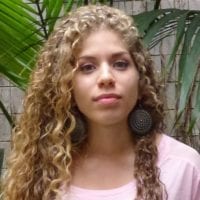
Membrane Topology of the TaALMT1 anion transporter mediating Aluminum tolerance in wheat
The presence of soluble aluminum ions(Al3+) in acid soils, which comprise more than 50% of the potential arable land, severely limit crop productivity. Several species have evolved Al-resistance mechanism; the most understood mechanism relies on the efflux of organic anions such as malate and citrate from the root, forming non-toxic complexes, and thereby excluding Al from entering the roots. TaALMT1 (a member of a family of genes encoding membrane proteins that facilitate organic anion efflux across the plasma membrane) mediates the latter Al-resistance mechanism in n wheat. Studies aimed at characterizing the structure/function relations of TaALMT1, have been constrained by the lack of known 3D structures. The current predicted model, obtained by hydrophobicity analysis, suggests a 6 transmembrane N-domain followed by a long soluble C-terminus. In light of new functional studies, our goal was to determine the membrane topology of TaALMT1 to evaluate the existence of two additional putative transmembrane domains in the C-terminus. We constructed C-term GFP chimeras of TaALMT1 truncations flaking the latter putative transmembrane domains, and expressed them in Xenopus laevis oocytes. Changes in the relative GFP fluorescence and intracellular pH were recorded in oocytes expressing the different chimeras using confocal microscopy and H+ selective microelectrodes, respectively. The correlation between these parameters indicated the N- and C- terminus are facing the cytoplasmic (rather than extracellular) region. In addition, although being highly hydrophobic, the two putative C-terminus transmembrane do not seem to transverse the membrane, but rather may serve just as membrane anchoring regions.
My Experience
The PGRP internship introduced me to different research areas in plant science. I learned new research techniques and tools such cloning, confocal microscopy, in vitro transcription among others. Now I have a clearer idea of my own research interests and what I would like to focus on in graduate school. This summer made me reaffirm that I’m on the correct path and that research is where I belong.
